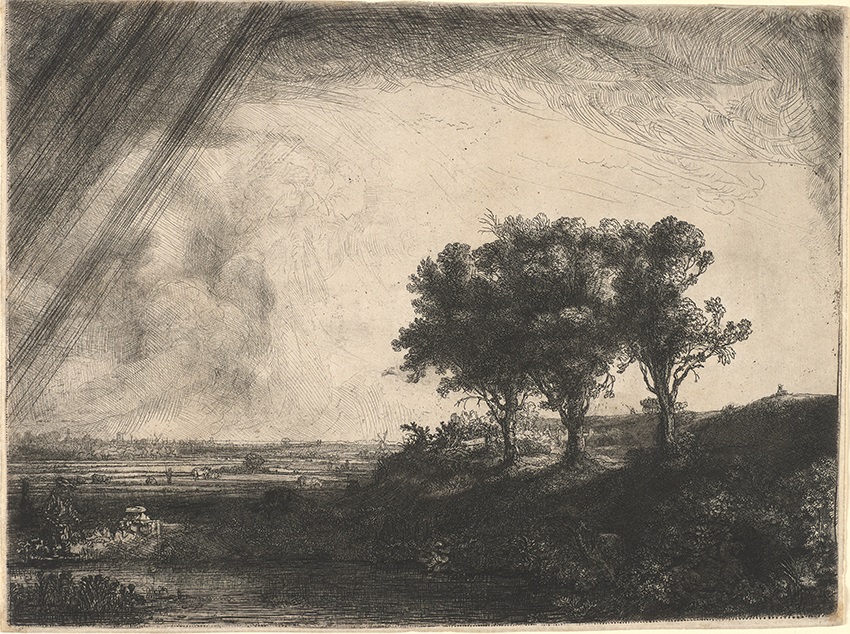The Princeton University Art Museum announces the acquisition of one of Rembrandt’s most iconic prints: the evocative and technically complex etching by Dutch Landscape with Three Trees (1643).
The composition combines three large trees at center right with flat expanses of tilled fields, populated by windmills, cattle and herdsmen and canopied by dramatic clouds and driving rain. The sweeping landscape depicted is generally considered to be a distillation of specific sites in the countryside around Amsterdam, which Rembrandt explored during walking expeditions. Additional human motifs – including (on the far right) a seated artist sketching and a horse-drawn wagon full of people; a fisherman and his female companion in the left foreground; and two lovers, barely visible in the shadowy bower at right – contribute to the scene’s humanistic appeal.

Rembrandt van Rijn (1606–1669), Landscape with Three Trees, 1643
Princeton University Art Museum, New Jersey
The Three Trees was acclaimed critically as early as the mid-18th century. Edmé François Gersaint, the French connoisseur who compiled of one of the earliest known catalogues of Rembrandt prints, stated in 1751 that “This Landscape is one of the most beautiful and most finished that Rembrandt made.”
The Princeton University Art Museum holds 70 of the 300 prints produced by Rembrandt over his long career, providing a cross-section of the artist’s graphic output, ranging from several of his earliest self-portraits and genre studies to some of his greatest late religious compositions. The new acquisition joins the only other landscape etching in the Museum’s collection, Landscape with a Thatched Cottage (1641), which was acquired in 1960.
